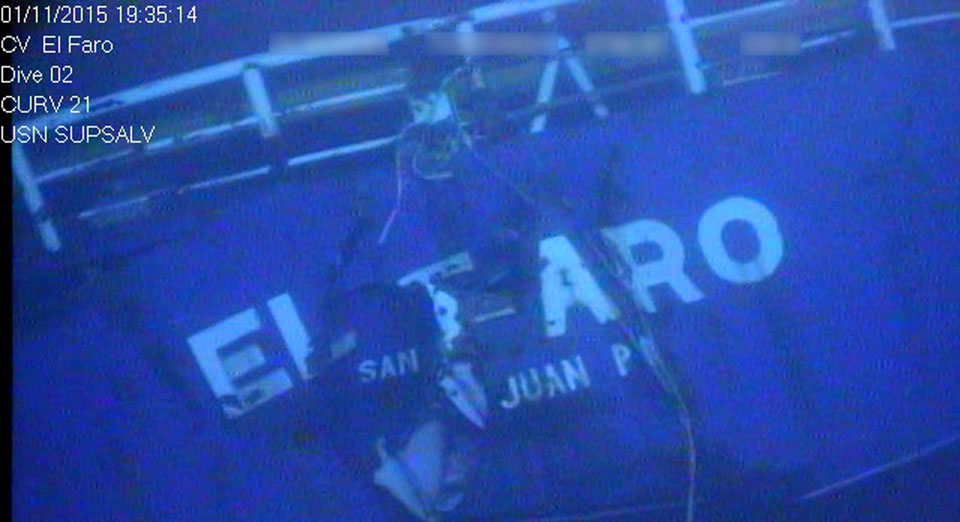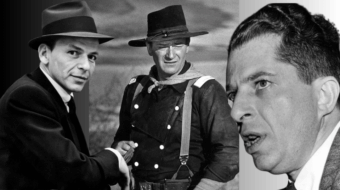
On September 29, 2015, the container ship El Faro, which means lighthouse, left port in Jacksonville, Fla. It was carrying 25 million pounds of cargo, including such diverse commodities as 149 cars and fructose syrup. Its destination was San Juan, Puerto Rico, but it never got there.
How does a ship, stretching more than two-and-a-half football fields in length, sink in the 21st century? Was it solely the hurricane it attempted to navigate?
The truth is that the ship was floundered by a toxic mix of elements.
But first, some background. Over the last four decades, there has been a sustained attack on mariners and their working conditions, including health and safety. President Ronald Reagan (1980-89) knew the radical organizing behind Mariners unions; he eliminated the Seamen’s hospitals which stretched back to 1789.
The International Maritime Organization (U.N.) issued the International Maritime Safety Code in 1987, but the U.S. did not sign on.

In 2011, the shipping company TOTE that owned El Faro, hired a consultant to make their operation leaner. Immediately heads rolled, including a whistle blower who had pointed out maintenance being neglected on another ship. Overall, crews and shore help shrank. Critically, there was no clear evaluator of ships officers, including the captain.
An example that directly impacted El Faro during its encounter with Hurricane Joaquin was the 2012 elimination of a Port Captain. These were usually experienced maritime officers who were at the ready if there was an emergency at sea. When the captain of El Faro belatedly called the company for that experienced voice for advice, there was none.
Lobbyists did more dirty work for shipping companies. Keeping waterlines high on hulls seem to be an objective. Also called the Plimsoll mark, this is the line that should not be breached as it could cause buoyancy problems for the ship. Companies want these waterlines, which are marked on hulls, high so they can carry more containers. In other words, the ship would then run lower in the water.
This is a particularly important point concerning El Faro. It was an older, converted container ship with vents on its hull to send air down into the belly of the ship. Water most certainly made its way into the ship this way during Joaquin. Should the waterline have been raised or the venting reconfigured?
One of the most egregious moves by the company was to refuse to equip the aging ship with modern, and expensive, enclosed lifeboats. International codes mandated the change in 1986. Some of El Faro’s antiquated, open lifeboats were found after the hurricane in the ocean debris field. They were empty.
Multiple subsidiaries
There were multiple subsidiaries of TOTE which was itself a subsidiary. When administrators were questioned about safety during follow-up hearings to the sinking of El Faro, fingers would point in other directions. Most had business degrees and would clearly state their job was to make money. The finger pointing would stop at the Master captain and he was now under three miles of ocean.
Were these the only factors? Not by a long shot.
What role did fossil fuel-generated climate change play? Heat is the key ingredient that gives muscle to a hurricane. Hurricane Joaquin got that extra energy from very warm Bahamian waters.
At a record 86 degrees in 2015, the ocean was two degrees hotter than usual. What’s the big deal? Each degree rise in ocean temperature can increase a hurricane’s wind speed by 15 to 20 miles per hour. It was like a shot of adrenalin into a growing monster.
That monster hurricane hit wind speeds of 155 miles per hour. At wind speeds of 60 miles per hour, a person has trouble putting a foot down where one intended to land it. These winds were so high, that along with 30- to 40-foot waves, water is also airborne making it almost impossible to breathe. Even if mariners made it into an open life boat, chances of survival were slim at best.
Cost-cutting machinations of the TOTE shipping company and the windspeed spike of global warming were clear objective factors. There are also subjective factors involved on any ship at sea, even in good weather. Trust between Captain, mates, and crew is a must.
Second Mate Danielle Randolph of Rockland, Maine, knew all too well about trust and how it can be shattered. On one of her first TOTE Co. voyages, the chief mate told her that he wanted to see her. When the door opened to his state room, he dropped the towel he was wearing. She got out of there fast. The chief mate was fired for sexual harassment.

Randolph’s skirmish with sexual harassment didn’t end there. The next one was even more daunting. It was Captain Davidson. He ambled up to her on the bridge one day and said, “I’d like you to be my friend.”
The meaning of that advance was not lost on the young second mate. This would be a more of a challenge. Captains reign supreme on ship. They give the orders. The crew followed them including the officer mates. Captains are still called master. Would she ever get another job if she called him on it? How could she tell him that he was following a disastrous shipping route.
Captain Davidson was not a crew captain in the eyes of those who carried out his orders. He quite often went from his quarters to the bridge and back to his quarters. He isolated himself and seemed to like it that way.
Reputation as a hothead
Davidson also had a reputation as a hothead. He would fly off the handle quickly. None of the above endeared him to the crew.
One of the two books on the sinking of El Faro, Into The Raging Sea by Rachel Slade (HarperCollins 2018), tells an even darker story. Davidson was a doomsday survivalist.
Davidson had guns at the ready. He equipped his wife and daughters with Glocks. There is a video of Davidson charging a target with automatic weapons ablaze. When he runs out of ammunition, he draws handguns. When out of bullets again, he brandishes knives.
But there was another level to all this with captain Davidson. He was not only a survivalist in doomer fashion, he was a doom prepper. The difference is they like to be tested.
Was the captain testing himself and, in a similar sense, showing his mettle to the crew, by steering El Faro dead into a hurricane? Also, was racism involved? Doomers can have quite an array of enemies in mind. Some see people of color playing that role. A full one-third of the El Faro crew was Black.
A ship going out of its planned course to avoid a storm would take more fuel and time. The ship owners’ mantra is like any corporation. Time is money, in this case profits would be lost. The captain was known to be seeking an assignment with a newer ship. Was he also trying to show his fidelity to ownership by not rerouting and costing the company added expense?
You can hear actual testimony at the National Transportation Board meeting investigating the sinking of El Faro.

On October 7, 2015, then AFL-CIO President Richard Trumka stated, “We are deeply saddened by the loss of twenty-eight of our brothers and sisters aboard the cargo ship El Faro. These brave men and women left an incredible mark on their communities, both on land and at sea via their hard work and steadfast commitment to the maritime trade.”
Was Captain Davidson the sole reason for the demise of El Faro as the corporate heads continually pointed to him during the investigation? Probably not. Clearly, he did make the decision to continue mostly on route in face of a growing threat to the ship and crew.
The sinking of El Faro was a microcosm of corporate society. It was run as an autocracy, with ample doses of male supremacy, and a worshiping of the bottom line.
Profits were sacrosanct. Mix in climate change, shipping lobbyists, cutbacks, deregulation, a dangerous leader with a doomer bent, and what do you get? Disaster.
The memorial gathering on Sept. 24, 2022, in Rockland, Maine, paid moving tribute to the mariners who were the essential workers getting useful products to the Island of Puerto Rico on a regular basis. The heroism of that multiracial, multinational, male/female workforce of El Faro was in their everyday work.










